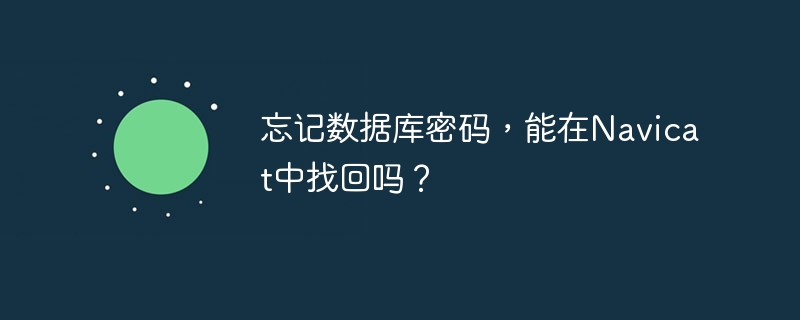
本文旨在解决在 GWT 客户端代码中使用 Guice 的 @Named 注解进行依赖注入时遇到的问题。由于 GWT 客户端环境的特殊性,直接使用 Guice 注入静态值会引发错误,例如 “You are executing Names.named() in GWT code” 以及 “Binding requested for constant key… but no explicit binding was found”。本文将介绍两种解决方案:使用 AbstractginModule 在客户端绑定静态值,以及使用 GWT rpc 从服务器端获取动态值,从而规避客户端直接使用 Guice 的限制,实现依赖注入。
客户端静态值的注入:使用 AbstractGinModule
由于 GWT 客户端无法完整模拟 Java 环境,直接使用 Guice 的 @Named 注解进行注入会导致错误。解决这一问题的关键在于使用 AbstractGinModule 在客户端进行绑定。
以下是一个示例:
-
创建 Gin 模块:
创建一个类继承 AbstractGinModule,并在 configure() 方法中进行绑定。
import com.google.gwt.inject.client.AbstractGinModule; import com.google.inject.name.Names; public class MyGinModule extends AbstractGinModule { @Override protected void configure() { bindConstant().annotatedWith(Names.named("endpoint")).to("Endpoint URL"); } } -
在 GWT 模块中引入 Gin 模块:
在你的 GWT 模块的 *.gwt.xml 文件中,添加 Gin 模块的引用。
<module rename-to='mymodule'> <!-- Inherit the core Web Toolkit stuff. --> <inherits name='com.google.gwt.user.User'/> <!-- Inherit the Gin module. --> <inherits name="com.google.gwt.inject.Inject"/> <!-- Other module settings... --> <source path='client'/> <entry-point class='com.example.client.MyEntryPoint'/> </module>
-
使用 @Inject 和 @Named 注解:
在你的 GWT 客户端代码中,使用 @Inject 和 @Named 注解来注入值。
import com.google.gwt.core.client.GWT; import com.google.gwt.uibinder.client.UiBinder; import com.google.gwt.user.client.ui.Composite; import com.google.gwt.user.client.ui.Widget; import com.google.inject.Inject; import com.google.inject.name.Named; public class MyUIPanel extends Composite { private static MyUIPanelUiBinder uiBinder = GWT.create(MyUIPanelUiBinder.class); interface MyUIPanelUiBinder extends UiBinder<Widget, MyUIPanel> { } @Inject @Named("endpoint") private String endpoint; @Inject public MyUIPanel() { initWidget(uiBinder.createAndBindUi(this)); // Use the injected endpoint value GWT.log("Endpoint: " + endpoint); } }注意: 你需要使用 Gin 来创建 MyUIPanel 的实例,而不是使用 new MyUIPanel()。 通常,你需要在你的 EntryPoint 中使用 GinInjector 来获取实例。
import com.google.gwt.core.client.EntryPoint; import com.google.gwt.core.client.GWT; import com.google.gwt.user.client.ui.RootPanel; import com.google.inject.Guice; import com.google.inject.Injector; public class MyEntryPoint implements EntryPoint { @Override public void onModuleLoad() { Injector injector = Guice.createInjector(new MyGinModule()); MyUIPanel myUIPanel = injector.getInstance(MyUIPanel.class); RootPanel.get().add(myUIPanel); } }
客户端动态值的获取:使用 GWT RPC
对于需要从属性文件或数据库动态获取的值,不能直接在客户端使用 Guice 注入。 解决方案是将获取动态值的逻辑放在服务器端,然后通过 GWT RPC 将值传递给客户端。
以下是一个示例:
-
定义 RPC 服务接口:
import com.google.gwt.user.client.rpc.RemoteService; import com.google.gwt.user.client.rpc.RemoteServiceRelativePath; @RemoteServiceRelativePath("endpointService") public interface EndpointService extends RemoteService { String getEndpoint(); } -
定义 RPC 服务接口的异步版本:
import com.google.gwt.user.client.rpc.AsyncCallback; public interface EndpointServiceAsync { void getEndpoint(AsyncCallback<String> callback); } -
实现 RPC 服务接口:
import com.google.gwt.user.server.rpc.RemoteServiceservlet; public class EndpointServiceImpl extends RemoteServiceServlet implements EndpointService { @Override public String getEndpoint() { // Logic to fetch endpoint from properties file or database return "Dynamic Endpoint URL from Server"; } }
-
在 web.xml 中配置 Servlet:
<servlet> <servlet-name>endpointService</servlet-name> <servlet-class>com.example.server.EndpointServiceImpl</servlet-class> </servlet> <servlet-mapping> <servlet-name>endpointService</servlet-name> <url-pattern>/mymodule/endpointService</url-pattern> </servlet-mapping>
-
在客户端调用 RPC 服务:
import com.google.gwt.core.client.GWT; import com.google.gwt.user.client.rpc.AsyncCallback; import com.google.gwt.user.client.rpc.ServiceDefTarget; public class MyUIPanel { public void loadEndpoint() { EndpointServiceAsync endpointService = GWT.create(EndpointService.class); ServiceDefTarget endpoint = (ServiceDefTarget) endpointService; endpoint.setServiceEntryPoint(GWT.getModuleBaseURL() + "endpointService"); endpointService.getEndpoint(new AsyncCallback<String>() { @Override public void onFailure(Throwable caught) { GWT.log("Error fetching endpoint: " + caught.getMessage()); } @Override public void onSuccess(String result) { // Use the endpoint value obtained from the server GWT.log("Endpoint from server: " + result); } }); } }
总结
在 GWT 客户端使用 Guice 进行依赖注入需要注意其特殊性。 对于静态值,可以使用 AbstractGinModule 在客户端进行绑定。 对于动态值,建议使用 GWT RPC 从服务器端获取。 这样可以避免客户端直接使用 Guice 引起的错误,并保证应用程序的正常运行。
注意事项:
- 确保正确配置 Gin 模块和 GWT RPC 服务。
- 在开发模式下,可能需要配置 CORS 才能允许客户端从服务器获取数据。
- 始终在服务器端进行敏感数据的处理,避免在客户端暴露敏感信息。

















